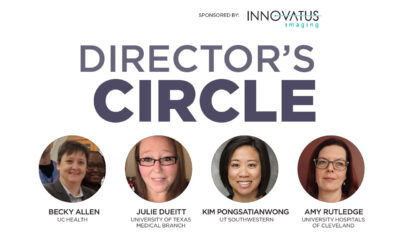
By Daniel Bobinski
 While driving through the American Southwest in the early 1980s, I found myself in the small town of Winslow, Arizona. Yes, Eagles fans, that Winslow, Arizona. Because my dad was an Eagles fan, I decided to buy him a souvenir. He ended up getting two T-shirts; one proudly displaying the town’s name, and another which said, “Eat a live toad for breakfast, and nothing worse can happen to you the rest of the day.”
While driving through the American Southwest in the early 1980s, I found myself in the small town of Winslow, Arizona. Yes, Eagles fans, that Winslow, Arizona. Because my dad was an Eagles fan, I decided to buy him a souvenir. He ended up getting two T-shirts; one proudly displaying the town’s name, and another which said, “Eat a live toad for breakfast, and nothing worse can happen to you the rest of the day.”
The latter was rather quirky, but my dad enjoyed quirky humor. The interesting thing is that the phrase stayed with me. The saying may be quirky, but the principle is spot on – get the hard stuff done first, everything else is easy.
“What are some of the ‘hard things?’” Great question. After all, if we’re going to be productive, being industrious right out of the gate is great because it sets the tone for the entire day.
In her book, “Never Check Email In The Morning,” Julie Morgenstern is an advocate of getting tough stuff done first. She Is not anti-email. Instead, she’s pro-action. From Morgenstern’s perspective, and I tend to agree, jumping into email first thing in the morning tends to make us reactive.
As an alternative, Morgenstern says it’s important that our first tasks of the day have us “dancing close to the revenue line.” What she means is that we should identify the tasks which will bring revenue to the organization and make sure those action items get put at the top of the day’s work list.
In his best-selling book, “Seven Habits of Highly Effective People,” management guru Stephen Covey said it’s important that we not prioritize our schedule, but rather schedule our priorities. The fun and easy things are just that – fun and easy. Many people get to work and want to check off the simpler, more enjoyable tasks first. The problem is that fun and easy action items often sidetrack us from the important work that needs to be done – work that isn’t always fun.
Planning your day
In line with scheduling our priorities, I also want to refer to a book that changed my life in my early twenties. The book is titled, “Success! The Glenn Bland Method,” and it was originally published in 1983, but an updated 2010 version is now available. The book is subtitled, “How to set goals and really make them work,” and I will say that I found much value in Bland’s suggestions.
One chapter in Bland’s book is titled, “30 golden minutes.” In that chapter, Bland describes his method for getting focused and establishing priorities at the beginning of each day. Over the years, I’ve personally retitled this practice to be “15 golden minutes,” but the concept remains the same. Spend time each morning reviewing the day’s priorities, and wrap your mind around what’s required to achieve each one.
By the way, I’m a strong advocate of estimating approximately how much time it will take to accomplish each task – or at least how much time you will devote to that task for the day – and scheduling your day accordingly. That said, emergencies inevitably crop up, so I’ve also learned to allocate extra time for projects. That way, when someone brings a problem that needs your attention, you have flexibility in your schedule to address that concern.
Start with a verb
In his book titled, “Getting Things Done,” David Allen advocates using a verb to start each action item on our to do lists. For example, instead of, “letter to Matt,” the action item should be, “write letter to Matt.” Instead of, “meeting room,” the action item should be, “schedule meeting room,” or, “confirm meeting room reservation,” or, “inquire about meeting room availability.” It may seem like a little thing, but research shows that by starting each task with a specific action, the likelihood of the action getting done increases.
To me, it’s important to be specific. It’s kind of like what Mel Gibson said in the film, “The Patriot,” “Aim small, miss small.” In keeping with that concept, the book “Getting Things Done” also suggests that if you seem to be procrastinating on specific task, break the task down into smaller, more bite-size chunks. It might sound pedantic, but if you’re putting off writing that letter to Matt, identify an overtly simple task to help get the ball rolling.
For example, one could create a task that says, “Open word processing document to write letter to Matt.” Opening a new document is an easily achievable task, one that most people would be eager to check off. The magic is that once the word processing doc is open, we are much more likely to start drafting the letter.
The key for better success in all task lists is that each action item starts with a verb. Verbs are something we must do. Breaking larger tasks into smaller tasks has long been a method for getting things done, but sometimes we must break small tasks into even smaller tasks. As the saying goes, “How do you eat an elephant? One bite at a time.”
Be of service to others
Finally, allow me to reference Zig Ziglar’s book, “Goals; How to get the most out of your life.” In that book, Ziglar states that one of the best ways to get what you want is to help others get what they want. In other words, if we really want to be effective and productive, we need to do things throughout our day that help other people be productive and effective.
In closing, you’ll notice I covered a topic in December one would normally write in January. I hope you also noticed that I referenced many books in this piece. This was done on purpose. If any of the tips or suggestions in this column interests you, now would be a great time to order one or more of the books mentioned and get a head start on refocusing before the new year begins. Instead of “running down the road” with a world of trouble on your mind, you might find your days more fulfilling.
Daniel Bobinski, M.Ed. is a best-selling author and a popular speaker at conferences and retreats. For more than 30 years he’s been working with teams and individuals (1:1 coaching) to help them achieve excellence. He was also teaching Emotional Intelligence since before it was a thing. Reach him on his office phone at 208-375-7606 or through his website at www.MyWorkplaceExcellence.com.








